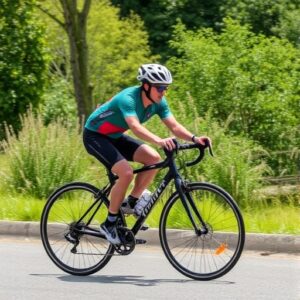Staying active is one of the most effective ways to manage your blood sugar levels, whether you’re dealing with diabetes, prediabetes, or simply looking to maintain a healthy lifestyle. Exercise helps improve insulin sensitivity, enhances glucose utilization, and supports overall metabolic health. But not all exercises are created equal when it comes to blood sugar control.
In this post, we’ll dive into the best sports and physical activities for managing your blood sugar, their specific benefits, and tips for incorporating them into your routine.
1. Walking: A Simple Yet Powerful Activity

Walking is one of the easiest and most accessible forms of exercise. It’s low-impact, requires no special equipment, and is suitable for all fitness levels.
- How It Helps: Walking after meals is particularly effective in lowering post-meal blood sugar spikes by encouraging glucose uptake by the muscles.
- How to Start: Aim for 30 minutes of brisk walking daily or break it into three 10-minute sessions after meals for maximum benefits.
2. Swimming: Low-Impact Cardio

Swimming is an excellent choice for aerobic exercise that’s gentle on the joints, making it ideal for people with mobility challenges or joint pain.
- How It Helps: It’s a full-body workout that improves cardiovascular health and promotes steady glucose utilization.
- Bonus: Swimming can also reduce stress, which is beneficial since stress hormones like cortisol can raise blood sugar.
3. Cycling: Great for Cardiovascular Fitness

Whether you’re pedaling through a park or using a stationary bike, cycling is a fantastic way to get your heart rate up and improve your blood sugar levels.
- How It Helps: Regular cycling boosts insulin sensitivity and helps burn excess glucose in the bloodstream.
- How to Start: Begin with 20–30 minutes of moderate-intensity cycling a few times a week and gradually increase as your fitness improves.
4. Yoga: Balance for Body and Mind

Yoga isn’t just about stretching—it’s a holistic activity that improves physical health while reducing stress and promoting mindfulness.
- How It Helps: Yoga has been shown to lower blood sugar by reducing stress hormones and improving circulation and insulin sensitivity.
- Best Practices: Focus on gentle, restorative yoga poses if you’re new, or explore more dynamic forms like vinyasa yoga as you progress.
5. Team Sports: Fun and Effective
Sports like soccer, basketball, and volleyball combine aerobic and anaerobic movements, making them great for overall fitness and glucose control.
- How It Helps: These activities provide bursts of high-intensity exercise that improve insulin sensitivity and overall cardiovascular health.
- Tip: Always monitor your blood sugar during intense games to avoid sudden drops or spikes.
6. Weight Training: Build Muscle, Burn Glucose
Strength training isn’t just for bodybuilders—it’s an essential part of a blood sugar management plan.
- How It Helps: Building muscle increases your body’s ability to store and use glucose efficiently. Over time, this can lead to better blood sugar control.
- Getting Started: Start with light weights or resistance bands 2–3 times per week, focusing on all major muscle groups.
7. Dancing: Fun and Energetic
From Zumba to ballroom dancing, this fun activity doesn’t feel like exercise but still offers great benefits.
- How It Helps: Dancing is a cardio workout that improves circulation and glucose metabolism.
- Bonus: Dancing also improves mood and reduces stress, which indirectly supports blood sugar control.
8. Hiking: Nature’s Gym
Hiking combines the benefits of walking with the added challenge of uneven terrain and inclines.
- How It Helps: The varying intensity of hiking helps regulate blood sugar and provides an excellent cardiovascular workout.
- Pro Tip: Bring healthy snacks like nuts or fruit to fuel your hike and prevent dips in blood sugar.
Tips for Getting Started with Sports
- Monitor Your Levels: Always check your blood sugar before, during, and after exercise to understand how your body reacts.
- Stay Hydrated: Dehydration can affect blood sugar levels, so drink plenty of water.
- Start Slow: If you’re new to exercise, begin with low-intensity activities and gradually increase the intensity and duration.
- Snack Smart: Keep quick-digesting carbs like fruit or glucose tabs on hand in case of low blood sugar (hypoglycemia).
- Consult Your Doctor: Always check with your healthcare provider before starting a new sport or exercise routine, especially if you’re managing diabetes.
Conclusion: Find the Sport That Works for You
The best sport for blood sugar management is the one you enjoy and can stick to consistently. Whether it’s the meditative calm of yoga, the adrenaline of a team game, or the simplicity of a daily walk, regular physical activity is key to improving glucose control and overall health.
At BloodSugarHealthy.com, we’re here to support you on your journey to better health. Explore our resources for more tips, recipes, and advice to make your fitness goals a reality.
Remember, managing blood sugar isn’t just about what you eat—it’s about staying active and living a balanced life. Lace up your sneakers and get moving toward better health today!
Let me know if you’d like any tweaks or additions!



